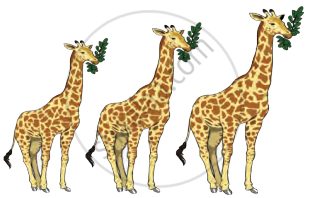Advertisements
Advertisements
Question
Given alongside are two figures (A and B) showing a phenomenon that was first observed in Manchester before and after the year 1850.

Answer the following:
Briefly mention why the changes shown in the two figures appeared.
Solution
- Before the Industrial Revolution in England, white-winged moths were more common than dark-winged moths. Lower pollution levels resulted in lighter tree trunks due to lichen. White-winged moths were not noticeable on light backgrounds, but dark-winged moths were easily eaten by predators.
- Following industrialisation, dark-winged moths became more prevalent than white-winged moths.
- During industrialisation, air pollution caused darkened tree trunks to have white lichens, making white-winged moths more visible.
- White-winged moths lack camouflage, making them vulnerable to predators.
- Nature selected the most suitable moths. However, none were totally exterminated.
APPEARS IN
RELATED QUESTIONS
Survival of fittest : Darwin : : Acquired characters : ..............................
Briefly discuss Lamarckian Theory of Inheritance citing an appropriate example.
Explain the occurrence of vestigial organs on the basis of Lamarck's theory of use and disuse.
Given alongside are two figures (A and B) showing a phenomenon that was first observed in Manchester before and after the year 1850.

Answer the following:
Give the common name and the scientific name of the insect involved in this phenomenon.
What is inheritance of acquired characters?
Explain Lamarck’s Principle.
Observe the picture and answer the following questions.

- The given picture indicates which principle?
- Explain that principle in your language.
- What is the meaning of acquired characteristics?
The use and disuse theory of organs’ was postulated by Charles Darwin.
The degenerated wing of a kiwi is an acquired character. Why is it an acquired character?
The theory proposed by Lamarck is ______.
